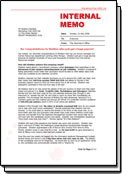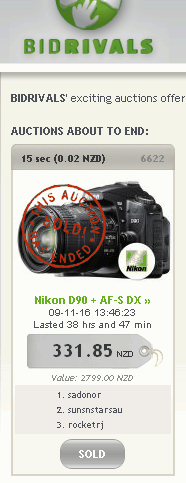The Story
A recruitment company I was working for wanted to reach out to Human Resources managers to tell them about their online recruitment solution.
We had purchased a list of 560 HR manager names and addresses from Veda Advantage, and needed a letter that would “cut through the clutter”, because this would be the first time that any of these people would have been exposed to our brand.
We were also conscious that this group of people are very busy, and probably suffering from information overload, so anything that wasn’t personalised or interesting would be thrown in the trash immediately.
The Objective
- To write a letter to “cut through the clutter” and gets to the decision makers desk

The Solution
I wrote a 2 page document (660 words) with the following features:
- Attention grabing headline: “Internal Memo: Re: Congratulations to <<recipients first name>> who just got a huge payrise!”
- Highly personalised: 39 instances of personalisation including their first name mentioned 21 times!
- Easy and fast for admin to stuff envelopes: Name and Address positioned to fit a pre-paid window envelope so no cheap-and-nasty looking self-adhesive address labels were required
- Designed for low-cost in-house printing: Using simple colours and classic letter design
- Content that told an interesting story (it was all about the recipient after all!)
The Result:
3 phone calls from some very angry executives. They complained that their secretaries had passed these letters directly to them to read because they hadn’t realised it was advertising.
(Secretaries are well trained to ensure promotional material of this type doesn’t make it to their bosses in-tray, so it is no surprise that the executives were very annoyed that their system had failed on this occassion, and were blaming us for being too clever.)
1 stated that they had “black listed” us and would never use our services. And another threatened to get their lawyers involved! (Thankfully, they didn’t carry out their threat).
Wow…
My boss wasn’t very happy, and had to make several apologies to these companies.
And I thought I was in danger of getting fired for a while.
But at the end of the day, the campaign achieved its objective: Get the attention of these time-starved professionals, and give our product a chance.
So I thought it was a huge success!
If your product or service doesn’t get noticed at all, you’ve got no chance. After all, as Oscar Wilde said: “There is only one thing worse than being talked about and that is NOT being talked about.”
And for the record, we did get lots of positive feedback saying from other HR pro’s, saying that they appreciated the cleverness of the campaign (and yeah, it generated new business for us too).



